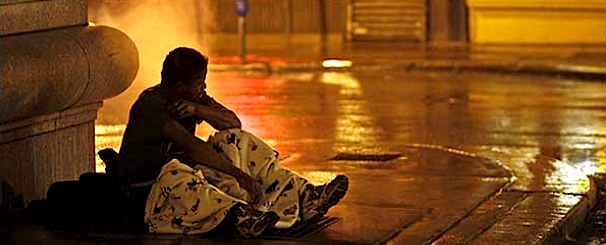
 BY JEFF DEENEY If you caught yesterday’s comments on the Inky’s big three part series, “Homelessness in Philadelphia,” you know that I felt it wasn’t looking so strong out of the gate. It was another collection of phoned in quotes from the usual suspects who contributed to the paper’s last ten articles on homelessness, some nominal street reporting that read like it was done in a single afternoon and a sensational accompanying photo of a ramshackle shelter, the sight of which anyone who’s ever worked a day in center city already knows all too well, that didn’t provide any extra depth to the story.
BY JEFF DEENEY If you caught yesterday’s comments on the Inky’s big three part series, “Homelessness in Philadelphia,” you know that I felt it wasn’t looking so strong out of the gate. It was another collection of phoned in quotes from the usual suspects who contributed to the paper’s last ten articles on homelessness, some nominal street reporting that read like it was done in a single afternoon and a sensational accompanying photo of a ramshackle shelter, the sight of which anyone who’s ever worked a day in center city already knows all too well, that didn’t provide any extra depth to the story.
The good news is that today’s second episode of the Inky’s series is both strong and dead on. Today, we’ve finally (finally!) broken out of the echo chamber. The article focuses on the efforts of two agencies you don’t often read about, that have been exploring a new method for attacking the homelessness problem that’s way out of the traditional box. Housing first, the core strategy for both Horizon House’s homeless services division and SafeHome Philadelphia’s program for families, can be summed up in a single sentence: the homeless client is provided with permanent housing first, and after being housed is provided the services traditionally provided (unsuccessfully, more often than not) in the shelter system in their new home.
The latter part of that single sentence is crucial, as you’ll see in the article that critics of housing first are often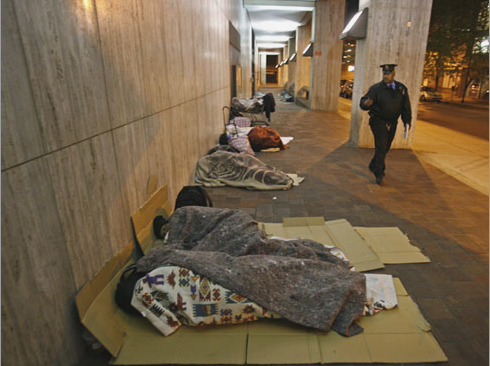 disingenuous in defining the term. These critics are usually heavily invested financially in the traditional model of homeless services that consists of a hard slog from a shelter, to transitional housing and maybe at the end of the haul into an apartment. During this long haul, the homeless are supposed to put their lives back together while staying in Ridge Avenue shelter for men or Eliza Shirley shelter for women and families. Ridge is notoriously unsafe, dirty, full of addicts getting high, loud and raucous throughout the night and overcrowded even during its off-peak season. Eliza Shirley is a big, open room where children try to do homework in partitioned cubicles not much different in size the space you have in your office. This is where they sleep, too, on cots in a dirty and unsafe atmosphere that clients I’ve worked with compared to prison.
disingenuous in defining the term. These critics are usually heavily invested financially in the traditional model of homeless services that consists of a hard slog from a shelter, to transitional housing and maybe at the end of the haul into an apartment. During this long haul, the homeless are supposed to put their lives back together while staying in Ridge Avenue shelter for men or Eliza Shirley shelter for women and families. Ridge is notoriously unsafe, dirty, full of addicts getting high, loud and raucous throughout the night and overcrowded even during its off-peak season. Eliza Shirley is a big, open room where children try to do homework in partitioned cubicles not much different in size the space you have in your office. This is where they sleep, too, on cots in a dirty and unsafe atmosphere that clients I’ve worked with compared to prison.
The average stay for a family at Eliza Shirley is 11 months. There’s another 11 month stay, on average, in an only slightly better transitional housing facility after that. At Ridge Avenue? Forget about it. I’ve worked with dudes that lived in general population at Ridge for years without ever being approached about a housing placement.
That’s the apparatus the city’s had working for the past, oh, twenty years. Shockingly enough, populations of street and family homeless are persistently high, recently as high as they’ve been in the last ten years. Nobody should be surprised. The system is broken. It has had twenty years to perform, and it hasn’t.
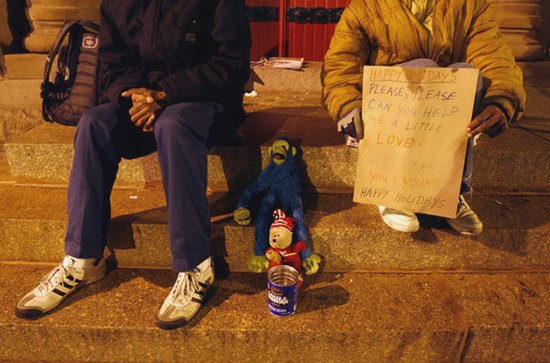 This is only half the knowledge that motivated decisions by people like Phyllis Ryan at SafeHome and Dave Dunbeck at Horizon House to start housing first programs in Philadelphia. The other insight that motivated these programs was that there was a new and different way of structuring homeless services that was working better in other cities. A psychiatrist named Sam Tsemberis tried housing the chronically street homeless in New York. After being given an apartment, the client was provided with intensive mental health services in their new home. He found that rates of incarceration, usage of emergency rooms, detoxes and psych units started to drop. The clients thrived, and the city was relieved of a tremendous financial burden.
This is only half the knowledge that motivated decisions by people like Phyllis Ryan at SafeHome and Dave Dunbeck at Horizon House to start housing first programs in Philadelphia. The other insight that motivated these programs was that there was a new and different way of structuring homeless services that was working better in other cities. A psychiatrist named Sam Tsemberis tried housing the chronically street homeless in New York. After being given an apartment, the client was provided with intensive mental health services in their new home. He found that rates of incarceration, usage of emergency rooms, detoxes and psych units started to drop. The clients thrived, and the city was relieved of a tremendous financial burden.
In Los Angeles, a program called Beyond Shelter lead by Tanya Tull did the same thing for families. When a family fell out of housing, they were put back into housing. They were spared the labyrinthine shelter system, and children’s school performance among other measures improved. When exported to other cities and properly implemented, agencies were able to get the same results. The Inky article reports a precipitous drop in shelter users after implementation of housing first in Chicago. Other cities like Columbus, Ohio, Boston and Seattle have been major contributors to the housing first movement, and have seen major improvements in their homeless problems as a result.
Media coverage of housing first efforts in other cities practically erupted in response to this radical new method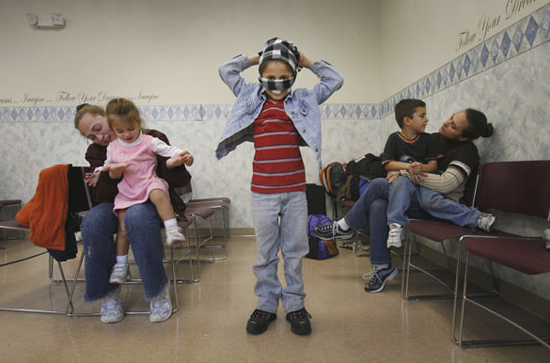 that was working. Over the past two years most major newspapers around the country have done serial stories examining this change over of resources from a paternalistic and inefficient system to a new one based on evidence and documented best practices.
that was working. Over the past two years most major newspapers around the country have done serial stories examining this change over of resources from a paternalistic and inefficient system to a new one based on evidence and documented best practices.
Except in Philadelphia, until now. I suppose late is better than never.
It wouldn’t be fair to blame the Inky entirely for missing the boat on housing first. There has been tremendous resistance to the new methodology in Philadelphia’s homeless services, where a small number of service providers have been able to hold onto large funding streams over long periods of time for methods of service provision that aren’t particularly effective. These methods (shelters, transitional housing) are at least not effective if the city’s stated goal is to end homelessness (it is, according to the city’s federally mandated ten year plan). The reality is that the city has provided limited access to adequate services for a small number of consumers, and open access to totally inhumane services for the rest.
As stated, critics of housing first are often disingenuous in their descriptions of what housing first is. Gloria Guard comments cynically in the Inky article, “We’re sending a message that poverty, serious trauma, domestic violence, childhood developmental delays, and addiction can all be fixed with an apartment.” The fact is that housing first providers don’t expect an apartment to solve everything. An apartment solves the client’s housing problem. From the stable base of permanent housing, housing first programs then provide intensive services in the home. Believe me, I worked at SafeHome Philadelphia and we were in the field, in client homes working on issues other than housing all day, just about every day. Ask a case manager in Horizon House’s homeless services division if they toss a client a set of keys and hope that solves all their problems. I have honestly never seen a group of people work so hard as the case managers with Horizon House’s housing first programs like New Keys.
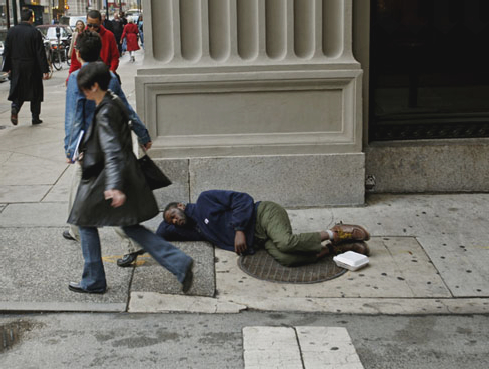 Comments like Gloria Guard’s and those from no less than the city’s director of homeless services Dainette Mintz, who characterizes housing first as “paying their rent and (saying) bye-bye,” are seriously denigrating to the people who I’ve personally watched at both SafeHome and Horizon House give everything they have to make sure their client’s needs are met after they’ve been housed.
Comments like Gloria Guard’s and those from no less than the city’s director of homeless services Dainette Mintz, who characterizes housing first as “paying their rent and (saying) bye-bye,” are seriously denigrating to the people who I’ve personally watched at both SafeHome and Horizon House give everything they have to make sure their client’s needs are met after they’ve been housed.
What about the deeper issues Gloria Guard raises, that she claims housing first programs can’t solve? She’s right in that homeless families almost always have more problems than a housing problem, but she’s wrong in her assumption that housing first programs need to have the capacity to fix those problems. When I as a case manager at SafeHome Philadelphia encountered a client with domestic abuse issues, I immediately connected them to an agency like Women Against Abuse, who are experts in that field. When I encountered mental health issues, I would refer a client to the city’s Targeted Case Management Unit, where they would be placed with an expert agency like CATCH or Horizon House. When I had a client who needed legal counsel I referred them to the Homeless Advocacy Project and Philadelphia Legal Assistance. These agencies are all extremely good at what they do, and are there to serve precisely the population we worked with.
And the bottom line is that none of this would be necessary for a family housing first provider if the city’s Department of Human Services actually worked in the first place. That’s a whole ‘nother blog post, though.
But this isn’t about the nuts and bolts of homeless services provision. The anxiety felt by some agencies who cast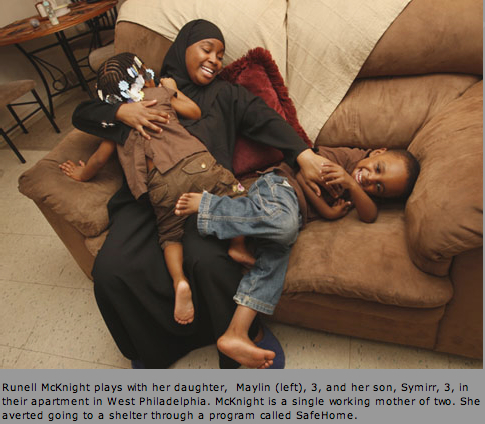 stones at housing first programs is really based on the fear that funding streams in Philadelphia are going to start to shift away from old methods, the way they have gradually done so across the nation in the past couple years. A lot of housing first providers would love to just come out and say this, but politically it’s not to their advantage. SafeHome Philadelphia serves the same number of families that the People’s Emergency Center serves with 1/10 of PEC’s $6 million dollar annual budget, and serves them just as well, if not better. If I was running that $6 million program, I might look at a new initiative like SafeHome and get a little nervous, too.
stones at housing first programs is really based on the fear that funding streams in Philadelphia are going to start to shift away from old methods, the way they have gradually done so across the nation in the past couple years. A lot of housing first providers would love to just come out and say this, but politically it’s not to their advantage. SafeHome Philadelphia serves the same number of families that the People’s Emergency Center serves with 1/10 of PEC’s $6 million dollar annual budget, and serves them just as well, if not better. If I was running that $6 million program, I might look at a new initiative like SafeHome and get a little nervous, too.
Housing first providers won’t need to continue pointing these things out for much longer. Their results generally speak for themselves. And Mayor Nutter isn’t Mayor Street. Nutter is all about these kinds of changes to city policy so far. Nutter is about what works, not what’s been the norm. I have faith that Nutter will want to be out front on this issue, where Street fell behind.
In conclusion, a final recommendation to the Inky moving forward regarding their coverage of homelessness. Change up your usual suspects. Those that lead yesterday aren’t necessarily leading today. In part two of your series you spotlighted two new leaders on Philly’s homelessness problem in Dave Dunbeck of Horizon House and Phyllis Ryan at SafeHome Philadelphia. Please keep their numbers in your Rolodexes; I think over the next four years you’re going to need them.
[Photos by MICHAEL S. WIRTZ/INQUIRER]
ABOUT THE AUTHOR: Jeff Deeney is a freelance writer whose work has appeared in PW, City Paper and the Inquirer. He focuses on issues of urban poverty and drug culture.
